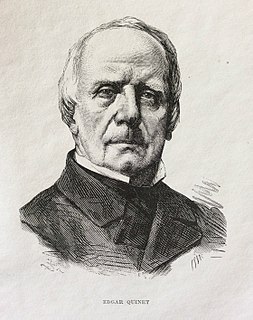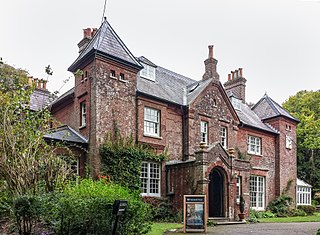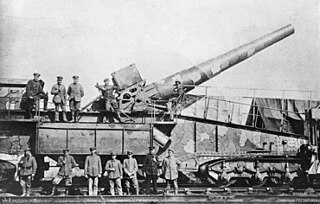
The rotary engine was an early type of internal combustion engine, usually designed with an odd number of cylinders per row in a radial configuration, in which the crankshaft remained stationary in operation, with the entire crankcase and its attached cylinders rotating around it as a unit. Its main application was in aviation, although it also saw use before its primary aviation role, in a few early motorcycles and automobiles.

An alternator is an electrical generator that converts mechanical energy to electrical energy in the form of alternating current. For reasons of cost and simplicity, most alternators use a rotating magnetic field with a stationary armature. Occasionally, a linear alternator or a rotating armature with a stationary magnetic field is used. In principle, any AC electrical generator can be called an alternator, but usually the term refers to small rotating machines driven by automotive and other internal combustion engines. An alternator that uses a permanent magnet for its magnetic field is called a magneto. Alternators in power stations driven by steam turbines are called turbo-alternators. Large 50 or 60 Hz three-phase alternators in power plants generate most of the world's electric power, which is distributed by electric power grids.

Bourg-en-Bresse is a commune in eastern France, capital of the Ain department, and the capital of the ancient province of Bresse. It is located 70 km (43 mi) north-northeast of Lyon.

Edgar Quinet was a French historian and intellectual.

The Battle of Wavre was the final major military action of the Hundred Days campaign and the Napoleonic Wars. It was fought on 18–19 June 1815 between the Prussian rearguard, consisting of the Prussian III Corps under the command of General Johann von Thielmann and three corps of the French army under the command of Marshal Grouchy. A blocking action, this battle kept 33,000 French soldiers from reaching the Battle of Waterloo and so helped in the defeat of Napoleon at Waterloo.

A revolving restaurant or rotating restaurant is usually a tower restaurant eating space designed to rest atop a broad circular revolving platform that operates as a large turntable. The building remains stationary and the diners are carried on the revolving floor. The revolving rate varies between one and three times per hour and enables patrons to enjoy a panoramic view without leaving their seats.

The Tower of the Americas is a 750-foot (229-meter) observation tower-restaurant located in the Hemisfair district on the southeastern portion of Downtown San Antonio, Texas, United States. The tower was designed by San Antonio architect O'Neil Ford and was built as the theme structure of the 1968 World's Fair, HemisFair '68. It was named as a result of a Name the Tower contest created by the executive committee. 68 people submitted the name the tower is now known by.

Max Gate is the former home of Thomas Hardy and is located on the outskirts of Dorchester, Dorset, England. It was designed and built by Thomas Hardy for his own use in 1885 and he lived there until his death in 1928. In 1940 it was bequeathed to the National Trust by Hardy's sister and is now open to the public. It was designated as a Grade I listed building on 8 May 1970.
Horaceville is a historic site located on the Ottawa River in eastern Ontario, Canada. The site remained the property of the heirs of Hamnett Kirkes Pinhey until the 1970s, when the property was sold to the township. Today, The 88-acre (360,000 m2) heritage site is owned and operated by the City of Ottawa and Pinhey's home serves as a museum. The museum is open May 14 through August 31, Wednesdays to Sundays, 11 am to 5 pm. This location is also known as Pinhey's Point Historic Site. The property was designated by the City of Ottawa under Part IV of the Ontario Heritage Act as having cultural heritage value or interest. A bronze plaque erected on the site by the Ontario Heritage Foundation describes the property's history: "Hamnet Kirkes Pinhey 1784 - 1857 - A merchant and ship owner in his native England, Pinhey came to Upper Canada in 1820. For his services as King's messenger during the Napoleonic Wars, he received a 1000 acres land grant on the Ottawa River. Within a decade he had built up an estate which he named Horaceville after his elder son. In addition to a manor house and barns, it included mills, a store and church. Pinhey took a leading part in township and district affairs. He was appointed to the Legislative Council in 1847, served as Warden of the Dalhousie District, and as the first Warden of Carleton County. Horaceville remained in family hands until 1959 when it was purchased by the National Capital Commission."
A revolving stage is a mechanically controlled platform within a theatre that can be rotated in order to speed up the changing of a scene within a show. A fully revolving set was an innovation constructed by the hydraulics engineer Tommaso Francini for an elaborately produced pageant, Le ballet de la délivrance de Renaud, which was presented for Marie de Medici in January 1617 at the Palais du Louvre and noted with admiration by contemporaries. Such a stage is also commonly referred to as a turntable.

The Theatine Church of St. Cajetan is a Catholic church in Munich, southern Germany. Built from 1663 to 1690, it was founded by Elector Ferdinand Maria and his wife, Henriette Adelaide of Savoy, as a gesture of thanks for the birth of the long-awaited heir to the Bavarian crown, Prince Max Emanuel, in 1662. Now administered by the Dominican Friars, it is also known as the Dominican Priory of St. Cajetan.
Marcel Alfred Quinet was a Belgian composer and pianist.

A swivel, spinny, or revolving chair is a chair with a single central leg that allows the seat to rotate 360 degrees to the left or right. The first swivel chair was invented by Thomas Jefferson, and is purported to be the chair on which he drafted the United States Declaration of Independence in 1776.

François Hennebique was a French engineer and self-educated builder who patented his pioneering reinforced-concrete construction system in 1892, integrating separate elements of construction, such as the column and the beam, into a single monolithic element. The Hennebique system was one of the first appearances of the modern reinforced-concrete method of construction.

The 24 cm SK L/40 "Theodor Karl" was a German railroad gun that served on both the Eastern Front and the Western Front in World War I. Originally a naval gun, it was adapted for land service after its ships were disarmed beginning in 1915. One gun saw service in the Belgian Army after the war. After Belgium's surrender in World War II, the Germans used that gun on coast-defense duties for the rest of the war.

The 28 cm SK L/40 "Bruno" (SK — SchnelladekanoneL — Länge was a German railroad gun. Originally a naval gun, it was adapted for land service after its ships were disarmed beginning in 1916. It served on the Western Front and on coast defense duties in Occupied Flanders during World War I. Belgium received four guns as reparations after the war. The Germans used two of those guns in World War II after Belgium's surrender during the Battle of France and on coast-defense duties on the Gironde Estuary for the rest of the war.

Throughout his career, Frank Lloyd Wright was interested in mass production of housing. In 1954, he discovered that Marshall Erdman, who contracted the First Unitarian Society of Madison, was selling modest prefabricated homes. Wright offered to design better prefabs, ones that he believed could be marketed for $15,000, which was half as much as Marshall Erdman and Associates, Inc. (ME&A) were charging for their own version. Wright didn't do much on the project until late 1955, but by spring of 1956 he had final plans for three Usonian-type homes to be built exclusively by ME&A. The December 1956 issue of HOUSE & HOME Magazine featured the Wright designed Marshall Erdman Prefab Houses and included Marshall in the cover story. No examples of Prefab #3 were ever built.
The Villa Girasole is a house constructed in the 1930s in Marcellise, northern Italy, near Verona. The conception of architect Angelo Invernizzi, Il Girasole rotates to follow the sun as it moves, just as a sunflower opens up and turns to follow the sun. This is how the unique house got its name.
Ernest Blerot was a Belgian architect who was born in Ixelles (Brussels) on February 21, 1870, and died in Ixelles on January 10, 1957. He was one of the most prolific Art Nouveau style Brussels architects of his time, and also worked as a property developer. Most of his work was produced from 1897 to 1909 and in particular between 1898 and 1904, the period during which he achieved around fifty houses.















